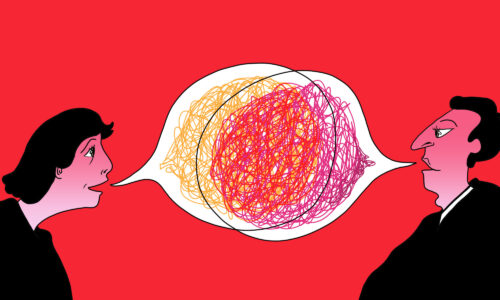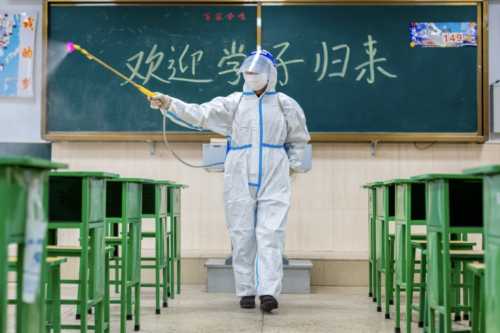China crushes Delta spike after weeks of strict measures
China’s health authorities are sticking with their strict playbook to contain and eliminate outbreaks of COVID-19. After over 1,200 were infected since July 20 in a Delta-driven spike, zero local infections were again officially reported for August 22.

After a little over a month, the latest outbreak of COVID-19 in China, driven by the Delta variant, appears to be contained. According to a National Health Commission report today (in English, Chinese), all 21 symptomatic cases and 16 asymptomatic cases reported on August 22 across the country were imported, rather than locally contracted.
- That’s the first time since July 19 that China has recorded zero new local COVID-19 cases. On July 20, the eastern city of Nanjing discovered an outbreak at its airport, which quickly spread to dozens of cities and ultimately infected over 1,200 people.
How did China contain Delta?
Mostly the same way it contained every previous wave of COVID.
- Many rounds of mass testing: Over 100 million tests have been conducted since the Nanjing outbreak began, per Bloomberg, with several cities going through multiple rounds to identify even a handful of cases out of millions of people.
- Wide and strict quarantines: Both quarantine in the sense of restricting travel, like in Nanjing and Beijing — the capital recorded its first case in over six months — and in the sense of medical quarantine. Hundreds are currently in isolation in Shanghai after one hospital worker and five airport logistics employees reported infections late last week, per the SCMP.
Over 30 officials were fired or otherwise punished for failing to enact epidemic control measures quickly or effectively enough, the AP reported.
No coexistence allowed
During the worst stages of the latest outbreak, in late July and early August, experts wondered if it was time for China to update its strict playbook for dealing with the virus.
- Zhāng Wénhóng 张文宏, one of the country’s most prominent infectious disease specialists, suggested on July 29 that China and the world would probably “have to learn to coexist with” COVID-19, after its risk profile was lowered “to the level of the seasonal flu” through vaccinations. This idea seemed to have some traction among other Chinese medical experts.
- But the “coexist” statement proved controversial, with former Chinese health minister Gāo Qiáng 高强 criticizing the idea of relaxing China’s zero-tolerance virus controls.
- In a scathing essay (in Chinese) dated August 5, Gao blamed the global resurgence of COVID-19 on countries like the U.K. and the U.S. that had “ignored the health and safety of the people,” relying entirely on vaccines instead of other control measures, leading other countries to also ease up before experiencing second and third waves.
- The “coexist” idea is the “inevitable result of promoting the values of individualism,” Gao added.
- A teacher in Jiangxi Province was detained on August 12 for suggesting in online comments that Yangzhou, a hard-hit city in the outbreak, could experiment with a coexistence strategy.
- Zhang was accused of plagiarism, apparently in response to his viewpoint contradicting official health policy: “Soon after Zhang’s comments, social media was flooded with unverified posts claiming he had plagiarized parts of his thesis” — but Fudan University, where he completed his studies, cleared him of academic misconduct today, Sixth Tone reports.
China has continued with zero virus tolerance policies, including in Ningbo, where the world’s third-busiest port was partly shut down after one worker was infected. The economy took a temporary hit from all the strict measures, and Goldman Sachs cut its third-quarter growth projection for China to 2.3% from 5.8%.
Herd immunity at 80%?
China’s vaccination goal, set earlier this summer and promoted this weekend (in Chinese) by prominent respiratory doctor Zhōng Nánshān 钟南山 as a threshold for “herd immunity” (群体免疫 qúntǐ miǎnyì), is to reach 80% vaccine coverage by the end of the year.
- With over 1.9 billion shots given in China so far, approximately 55% are fully vaccinated and as many as 69% may have received at least one shot, according to Bloomberg’s vaccine tracker.
- Some major cities like Shanghai and Beijing have already reached the goal of 80% coverage.
But Beijing is likely to take no chances when it hosts the Winter Olympics next February: Depending on the status of variants, there is “almost a zero percent chance” that foreign spectators would be let into the country to watch the Games, a source inside the Beijing Organizing Committee told The China Project.
In the longer run, Sixth Tone asks, Will mRNA COVID-19 vaccines be China’s ticket out of isolation?
- China’s vaccine development race is “entering its second lap,” Sixth Tone says, as biotech startup Abogen Biosciences tests its shot that “uses the same core technology as the Moderna and Pfizer-BioNTech vaccines.”
- It’s unclear when it might be approved: “I recently heard rumors that the Chinese regulator will approve the shot this month, but also I’ve been hearing that every month,” global health expert Yanzhong Huang told Sixth Tone.






